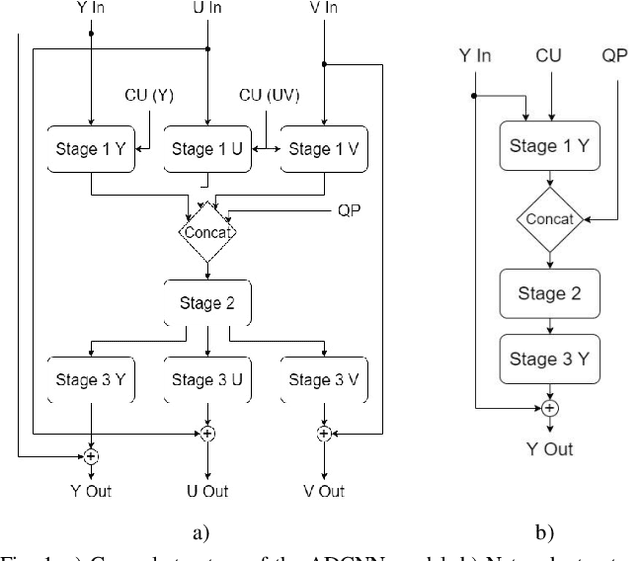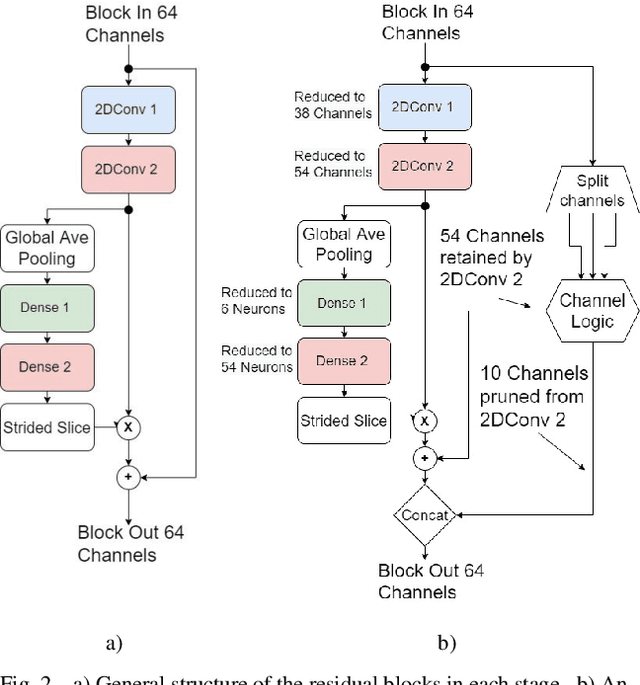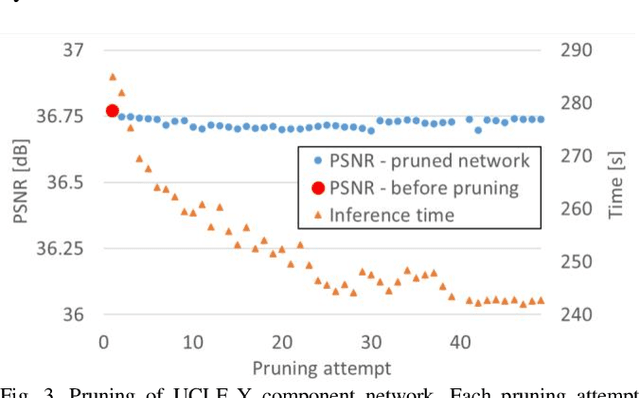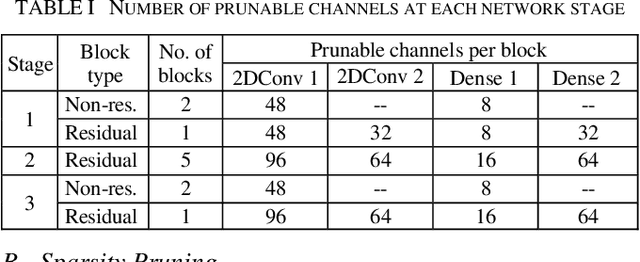Complexity Reduction of Learned In-Loop Filtering in Video Coding
Paper and Code
Mar 17, 2022



In video coding, in-loop filters are applied on reconstructed video frames to enhance their perceptual quality, before storing the frames for output. Conventional in-loop filters are obtained by hand-crafted methods. Recently, learned filters based on convolutional neural networks that utilize attention mechanisms have been shown to improve upon traditional techniques. However, these solutions are typically significantly more computationally expensive, limiting their potential for practical applications. The proposed method uses a novel combination of sparsity and structured pruning for complexity reduction of learned in-loop filters. This is done through a three-step training process of magnitude-guidedweight pruning, insignificant neuron identification and removal, and fine-tuning. Through initial tests we find that network parameters can be significantly reduced with a minimal impact on network performance.
 Add to Chrome
Add to Chrome Add to Firefox
Add to Firefox Add to Edge
Add to Edge